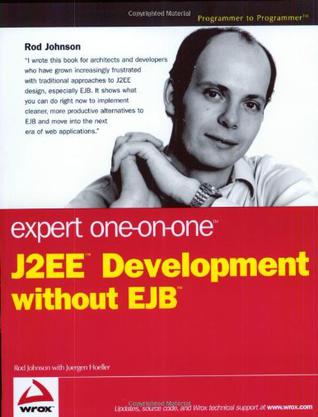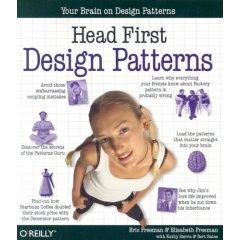-

Java Nio
Many serious Java programmers, especially enterprise Java programmers, consider the new I/O API--called NIO for New Input/Output--the most important feature in the 1.4 version of the Java 2 Standard Edition. The NIO package includes many things that have been missing from previous editions of Java that are critical to writing high-performance, large-scale applications: improvements in the areas of buffer management, scalable network and file I/O, character-set support, and regular expression matching. Most of all, it boosts performance and speed dramatically. Java NIO explores the new I/O capabilities of version 1.4 in detail and shows you how to put these features to work to greatly improve the efficiency of the Java code you write. This compact volume examines the typical challenges that Java programmers face with I/O and shows you how to take advantage of the capabilities of the new I/O features. You?ll learn how to put these tools to work using examples of common, real-world I/O problems and see how the new features have a direct impact on responsiveness, scalability, and reliability. The book includes: * A rundown of the new features in NIO * Basic and advanced I/O Concepts * Binary I/O and the new buffer classes * Memory mapped files and file locking * Character I/O: encoding, decoding and transforming character data * Regular Expressions and the new java.util.regex package * Muliplexing with java.nio Because the NIO APIs supplement the I/O features of version 1.3, rather than replace them, you'll also learn when to use new APIs and when the older 1.3 I/O APIs are better suited to your particular application. Java NIO is for any Java programmer who is interested in learning how to boost I/O performance, but if you're developing applications where performance is critical, such as game computing or large-scale enterprise applications, you'll want to give this book a permanent spot on your bookshelf. With the NIO APIs, Java no longer takes a backseat to any language when it comes to performance. Java NIO will help you realize the benefits of these exciting new features. -

Java Nio
Many serious Java programmers, especially enterprise Java programmers, consider the new I/O API--called NIO for New Input/Output--the most important feature in the 1.4 version of the Java 2 Standard Edition. The NIO package includes many things that have been missing from previous editions of Java that are critical to writing high-performance, large-scale applications: improvements in the areas of buffer management, scalable network and file I/O, character-set support, and regular expression matching. Most of all, it boosts performance and speed dramatically. Java NIO explores the new I/O capabilities of version 1.4 in detail and shows you how to put these features to work to greatly improve the efficiency of the Java code you write. This compact volume examines the typical challenges that Java programmers face with I/O and shows you how to take advantage of the capabilities of the new I/O features. You?ll learn how to put these tools to work using examples of common, real-world I/O problems and see how the new features have a direct impact on responsiveness, scalability, and reliability. The book includes: * A rundown of the new features in NIO * Basic and advanced I/O Concepts * Binary I/O and the new buffer classes * Memory mapped files and file locking * Character I/O: encoding, decoding and transforming character data * Regular Expressions and the new java.util.regex package * Muliplexing with java.nio Because the NIO APIs supplement the I/O features of version 1.3, rather than replace them, you'll also learn when to use new APIs and when the older 1.3 I/O APIs are better suited to your particular application. Java NIO is for any Java programmer who is interested in learning how to boost I/O performance, but if you're developing applications where performance is critical, such as game computing or large-scale enterprise applications, you'll want to give this book a permanent spot on your bookshelf. With the NIO APIs, Java no longer takes a backseat to any language when it comes to performance. Java NIO will help you realize the benefits of these exciting new features. -

Java Nio
Many serious Java programmers, especially enterprise Java programmers, consider the new I/O API--called NIO for New Input/Output--the most important feature in the 1.4 version of the Java 2 Standard Edition. The NIO package includes many things that have been missing from previous editions of Java that are critical to writing high-performance, large-scale applications: improvements in the areas of buffer management, scalable network and file I/O, character-set support, and regular expression matching. Most of all, it boosts performance and speed dramatically. Java NIO explores the new I/O capabilities of version 1.4 in detail and shows you how to put these features to work to greatly improve the efficiency of the Java code you write. This compact volume examines the typical challenges that Java programmers face with I/O and shows you how to take advantage of the capabilities of the new I/O features. You?ll learn how to put these tools to work using examples of common, real-world I/O problems and see how the new features have a direct impact on responsiveness, scalability, and reliability. The book includes: * A rundown of the new features in NIO * Basic and advanced I/O Concepts * Binary I/O and the new buffer classes * Memory mapped files and file locking * Character I/O: encoding, decoding and transforming character data * Regular Expressions and the new java.util.regex package * Muliplexing with java.nio Because the NIO APIs supplement the I/O features of version 1.3, rather than replace them, you'll also learn when to use new APIs and when the older 1.3 I/O APIs are better suited to your particular application. Java NIO is for any Java programmer who is interested in learning how to boost I/O performance, but if you're developing applications where performance is critical, such as game computing or large-scale enterprise applications, you'll want to give this book a permanent spot on your bookshelf. With the NIO APIs, Java no longer takes a backseat to any language when it comes to performance. Java NIO will help you realize the benefits of these exciting new features. -

Beyond Java
Bruce Tate, author of the Jolt Award-winning Better, Faster, Lighter Java has an intriguing notion about the future of Java, and it's causing some agitation among Java developers. Bruce believes Java is abandoning its base, and conditions are ripe for an alternative to emerge. In Beyond Java, Bruce chronicles the rise of the most successful language of all time, and then lays out, in painstaking detail, the compromises the founders had to make to establish success. Then, he describes the characteristics of likely successors to Java. He builds to a rapid and heady climax, presenting alternative languages and frameworks with productivity and innovation unmatched in Java. He closes with an evaluation of the most popular and important programming languages, and their future role in a world beyond Java. If you are agree with the book's premise--that Java's reign is coming to an end--then this book will help you start to build your skills accordingly. You can download some of the frameworks discussed and learn a few new languages. This book will teach you what a new language needs to succeed, so when things do change, you'll be more prepared. And even if you think Java is here to stay, you can use the best techniques from frameworks introduced in this book to improve what you're doing in Java today. -

Expert One-on-One J2EE Development without EJB
What is this book about? "Expert One-on-One J2EE Development without EJB" shows Java developers and architects how to build robust J2EE applications without having to use Enterprise JavaBeans (EJB). This practical, code-intensive guide provides best practices for using simpler and more effective methods and tools, including JavaServer pages, servlets, and lightweight frameworks. What does this book cover? The book begins by examining the limits of EJB technology - what it does well and not so well.Then the authors guide you through alternatives to EJB that you can use to create higher quality applications faster and at lower cost - both agile methods as well as new classes of tools that have evolved over the past few years. They then dive into the details, showing solutions based on the lightweight framework they pioneered on SourceForge - one of the most innovative open source communities. They demonstrate how to leverage practical techniques and tools, including the popular open source Spring Framework and Hibernate.This book also guides you through productive solutions to core problems, such as transaction management, persistence, remoting, and Web tier design. You will examine how these alternatives affect testing, performance, and scalability, and discover how lightweight architectures can slash time and effort on many projects. What will you learn from this book? Here are some details on what you'll find in this book such as: how to find the simplest and most maintainable architecture for your application; effective transaction management without EJB; how to solve common problems in enterprise software development using AOP and Inversion of Control; Web tier design and the place of the Web tier in a well-designed J2EE application; effective data access techniques for J2EE applications with JDBC, Hibernate, and JDO; how to leverage open source products to improve productivity and reduce custom coding; and, how to design for optimal performance and scalability. -

Head First Design Patterns
You're not alone. At any given moment, somewhere in the world someone struggles with the same software design problems you have. You know you don't want to reinvent the wheel (or worse, a flat tire), so you look to Design Patterns--the lessons learned by those who've faced the same problems. With Design Patterns, you get to take advantage of the best practices and experience of others, so that you can spend your time on... something else. Something more challenging. Something more complex. Something more fun. You want to learn about the patterns that matter--why to use them, when to use them, how to use them (and when NOT to use them). But you don't just want to see how patterns look in a book, you want to know how they look "in the wild". In their native environment. In other words, in real world applications. You also want to learn how patterns are used in the Java API, and how to exploit Java's built-in pattern support in your own code. You want to learn the real OO design principles and why everything your boss told you about inheritance might be wrong (and what to do instead). You want to learn how those principles will help the next time you're up a creek without a design paddle pattern. Most importantly, you want to learn the "secret language" of Design Patterns so that you can hold your own with your co-worker (and impress cocktail party guests) when he casually mentions his stunningly clever use of Command, Facade, Proxy, and Factory in between sips of a martini. You'll easily counter with your deep understanding of why Singleton isn't as simple as it sounds, how the Factory is so often misunderstood, or on the real relationship between Decorator, Facade and Adapter. With Head First Design Patterns, you'll avoid the embarrassment of thinking Decorator is something from the "Trading Spaces" show. Best of all, in a way that won't put you to sleep! We think your time is too important (and too short) to spend it struggling with academic texts. If you've read a Head First book, you know what to expect - a visually-rich format designed for the way your brain works. Using the latest research in neurobiology, cognitive science, and learning theory, Head First Design Patterns will load patterns into your brain in a way that sticks. In a way that lets you put them to work immediately. In a way that makes you better at solving software design problems, and better at speaking the language of patterns with others on your team.